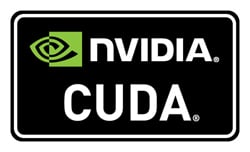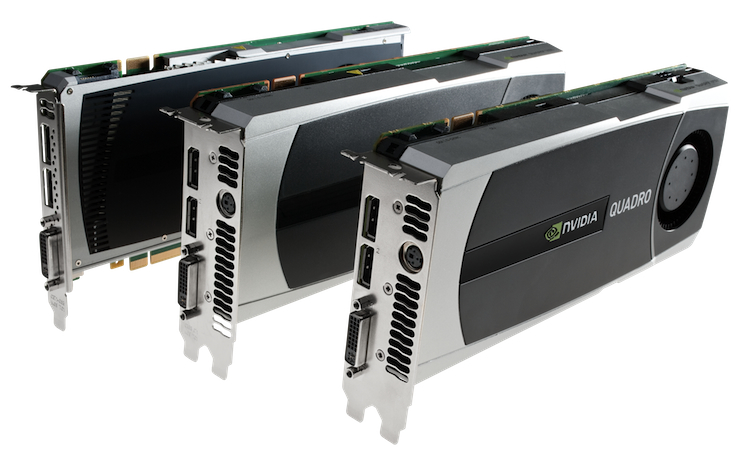NVIDIA's CUDA parallel computer architecture is picking up steam and quickly becoming one of the de-facto solution for producing high-end video content. When time is money, companies such as Industrial Light & Magic, and Adobe, cannot always cram every feature or pixel into the finished product. Most consumers might not realize that production technology is a major player in the race for quality, but NVIDIA's Quadro and Tesla product lines, coupled with the CUDA architecture, will determine the future of video as we know it.
Jon Peddie Research is a leading research firm for the multimedia industry and Mr. Peddie himself underscores the increasing value of NVIDIA's technology. "The film and broadcast industry is highly competitive, and the demands for providing even richer imagery, including stereoscopic 3D, are only increasing. CUDA is a remarkable architecture that utilizes the GPU to accelerate processes crucial to film and video production, such as encoding, color compression and effects simulation -- we are going to see things we never saw before."
Seeing things that have never been seen before is a broad statement, but there is still room to grow for the multimedia industry, and the times ahead look exciting. 3D is a recent advent, and for better or worse, we are seeing many movies converted to the format that weren't filmed using a proper stereoscopic camera. Many lament the somewhat hacked approach, citing greed as the main culprit, but the end product can be improved if studios are afforded more time to tweak the end result.
CUDA is boosting render times and increasing the speed at which editors and VFX artists can work their magic. Production artists can work in real-time with a CUDA equipped rig, rather than constantly rendering even short clips for review. "NVIDIA's GPU technology and CUDA, more specifically, have played a significant role in how we do our work. We're seeing improvements on simulation turnaround times that in the past would have taken hours, even days, and are now in some cases, down to minutes,” says Richard Kerris, CTO at ILM, a studio renowned for their work on VFX heavy films like Iron Man 2, Transformers, and a little sci-fa opera that could, Star Wars (episodes I-VI).
A lot of what makes CUDA hum is the array of Quadro/Tesla Fermi based GPU's under the hood. Applications such as Adobe Premiere Pro have, in the past, relied on the CPU for most of the rendering tasks. A recent surge in the power of GPU's has brought them to a new level of viability, and is creating a shift in the way third party developers create custom applications to harness the power. Premiere Pro plug-in developer, MainConcept, has included CUDA support in its latest Codec Suite 5.0 for CS5. Muzaffer Beygirci, Managing director of MainConcept feels that CUDA support has defined their future as a company, and will become a new standard across the board. “Professional MainConcept customers can now easily take advantage of NVIDIA Quadro and Tesla GPUs for astounding performance improvements that outperform any other currently available H.264 codec. Because of the mature CUDA eco-system, we were able to deliver our GPU-optimized products in record time and look forward to even more optimizations in the future."
GPUs are also handy when creating compression algorithms, which can be used for streaming video over the internet, or feeding signals to your home cable box. TDVision is one of the leading distributors of true 3D/HD (60 fps, 1080p) video and with NVIDIA's help, have found a way to encode these streams on traditional channels, dodging the need for infrastructure upgrades, or ditching old school 2D boxes, according to CMO Ethan Schur at the IBC convention in Amsterdam. "By utilizing the power of NVIDIA Quadro pro graphics and CUDA, we can perform very advanced mathematical processes to provide both a 2D and 3D signal on one channel. This offers content providers the ability to transmit the highest quality 3D, up to 1080p at 60 frames per second per view, directly to the home, while still ensuring backward compatibility on 2D legacy decoders." 3D video still has lots of potential to utilize and holographic TV sets are right around the corner, and CUDA could be the key to implementation. NVIDIA has a hot ticket that is already paying off for studios and consumers alike. Quadro cards might be too pricey and unnecessarily for your nerdy gaming rig, but everyone who consumes new-media will experience the effect they have on the industry at large. And for that, we thank you, NVIDIA.


